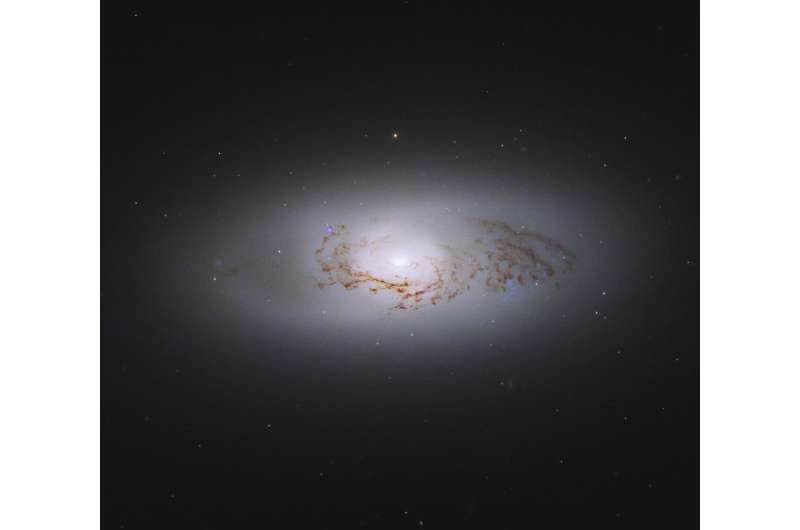This article has been reviewed according to Science X's editorial process and policies. Editors have highlighted the following attributes while ensuring the content's credibility:
fact-checked
trusted source
proofread
Hubble observes lenticular galaxy NGC 3489

NASA's Hubble Space Telescope captured this image of the lenticular galaxy NGC 3489. Lenticular galaxies aren't quite spiral galaxies or elliptical galaxies. They lie somewhere in between, exhibiting traits of both. Lenticular galaxies have a central bulge of tightly packed stars and a thin, circular disk of stars, gas, and dust, like spiral galaxies, but they lack arms. And like elliptical galaxies, lenticular galaxies have older stellar populations and little ongoing star formation.
NGC 3489 has an active galactic nucleus, or AGN. The AGN sits at the center of the galaxy, is extremely bright, and emits radiation across the entire electromagnetic spectrum as the black hole devours material that gets too close to it.
This lenticular galaxy is a Seyfert galaxy, which is a class of AGN that is dimmer than other types of AGNs. They generally don't outshine the rest of the galaxy, so the galaxy surrounding the black hole is clearly visible. Other types of AGNs emit so much radiation that it is almost impossible to observe the host galaxy.
NGC 3489 is about 30 million light-years away in the constellation Leo.
Provided by NASA





















